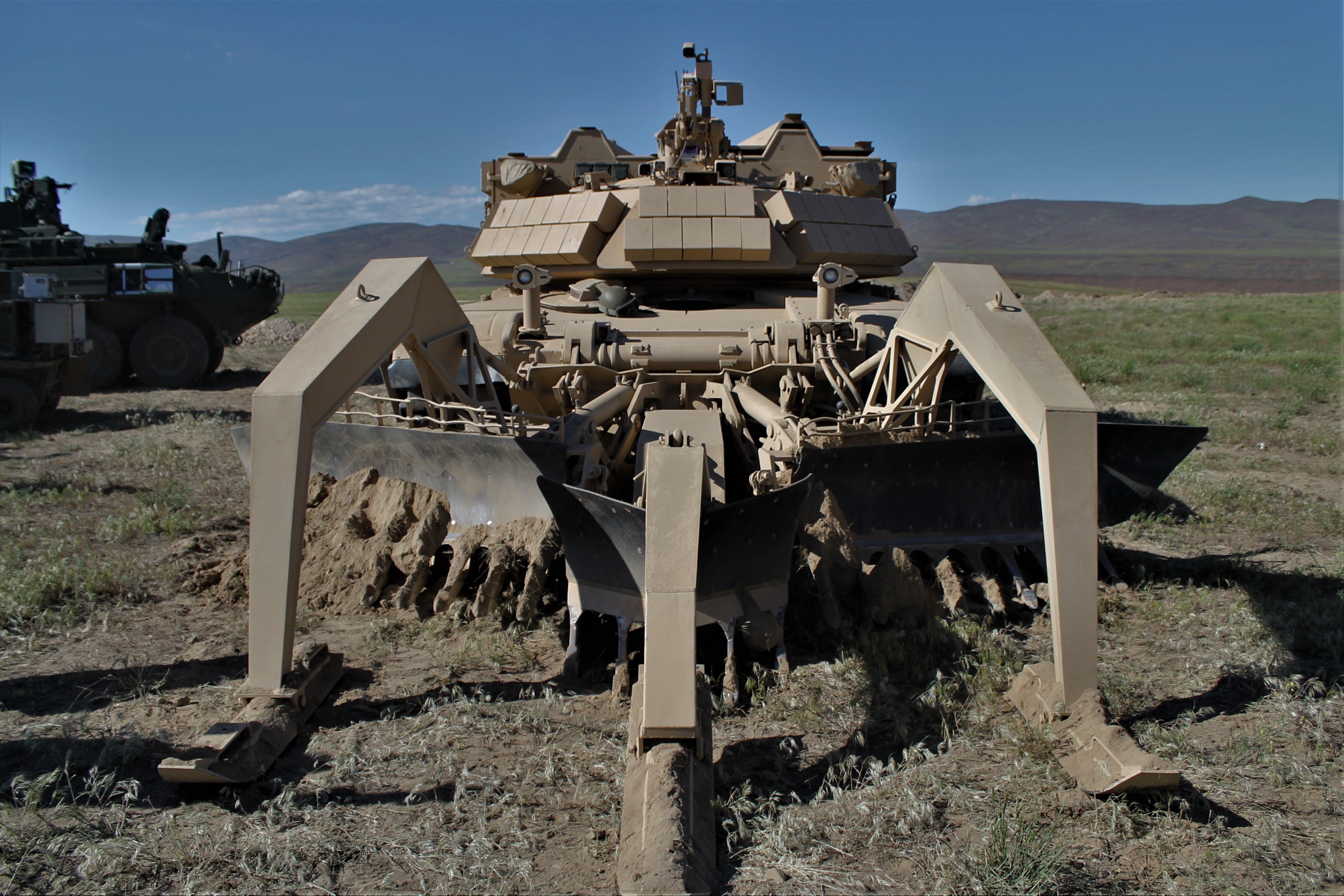WASHINGTON — The U.S. Army is digging deeper to develop robotic breacher vehicles for the force as it heads into a prototyping effort that will help it to define requirements for a future capability.
The service awarded a contract in May this year to Cybernet, a specialist in robotics and autonomous navigation, for a robotic applique that will be installed on Assault Breacher Vehicles, creating prototypes that will undergo evaluation for about 18-24 months.
“The Assault Breacher Vehicle remote control system … is a fully tracked combat engineer vehicle designed to breach minefields and complex obstacles … one of our highest risks [and] threats out there to our soldiers today,” Brig. Gen. Luke Peterson, the Army’s program executive officer for combat support and combat service support, told Defense News in a recent interview.
The Army expects to pass through a preliminary design review for the prototypes in the fourth quarter of fiscal 2023, with the delivery of the first prototypes scheduled for the second quarter of fiscal 2024, Peterson said.
The prototype effort will inform longer-term Army requirements, he added.
The Army waded into concept development for robotic Assault Breacher Vehicles in May 2019 at Yakima Air Base in Washington state.
As part of the Joint Warfighting Assessment exercise, two of the vehicles controlled by a Marine Corps unit tackled obstacles atop a desert plateau. Both robotic vehicles were controlled from a single command vehicle.
The first Assault Breacher Vehicles employed a mine-clearing line charge, creating a path for the second to fill a tank trench. The battlefield preparations paved the way for an assault force to move on an enemy location.
While the first breach exercise took two and a half hours, the second time around took 30 minutes less, proving robots could at least accomplish the same breach in roughly the same amount of time as a manned operation would take.
The evaluation raised questions about how to deploy such capabilities and protect them, how to avoid enemy detection, how to move them off the battlefield if they broke down, to how to design a vehicle that could be considered expendable and therefore be abandoned on a battlefield if necessary.
Industry is also thinking about the problem set.
At the Association of the U.S. Army’s annual conference last month, General Dynamics Land Systems brought a new concept it calls the TRX Breacher. The tracked, 10-ton robotic technology demonstrator would support the Army’s desire to have robots execute the dull, dirty and dangerous missions, the company said.
GDLS partnered with Pearson Engineering, which is providing an obstacle reduction kit.
The breacher robot is capable of keeping up with formations, and is transportable on CH-47 Chinook cargo helicopters and C-130 aircraft, the company said.
The team also designed the robot for hybrid power and gave it the ability to generate exportable power to support mission command operations.
Jen Judson is an award-winning journalist covering land warfare for Defense News. She has also worked for Politico and Inside Defense. She holds a Master of Science degree in journalism from Boston University and a Bachelor of Arts degree from Kenyon College.







